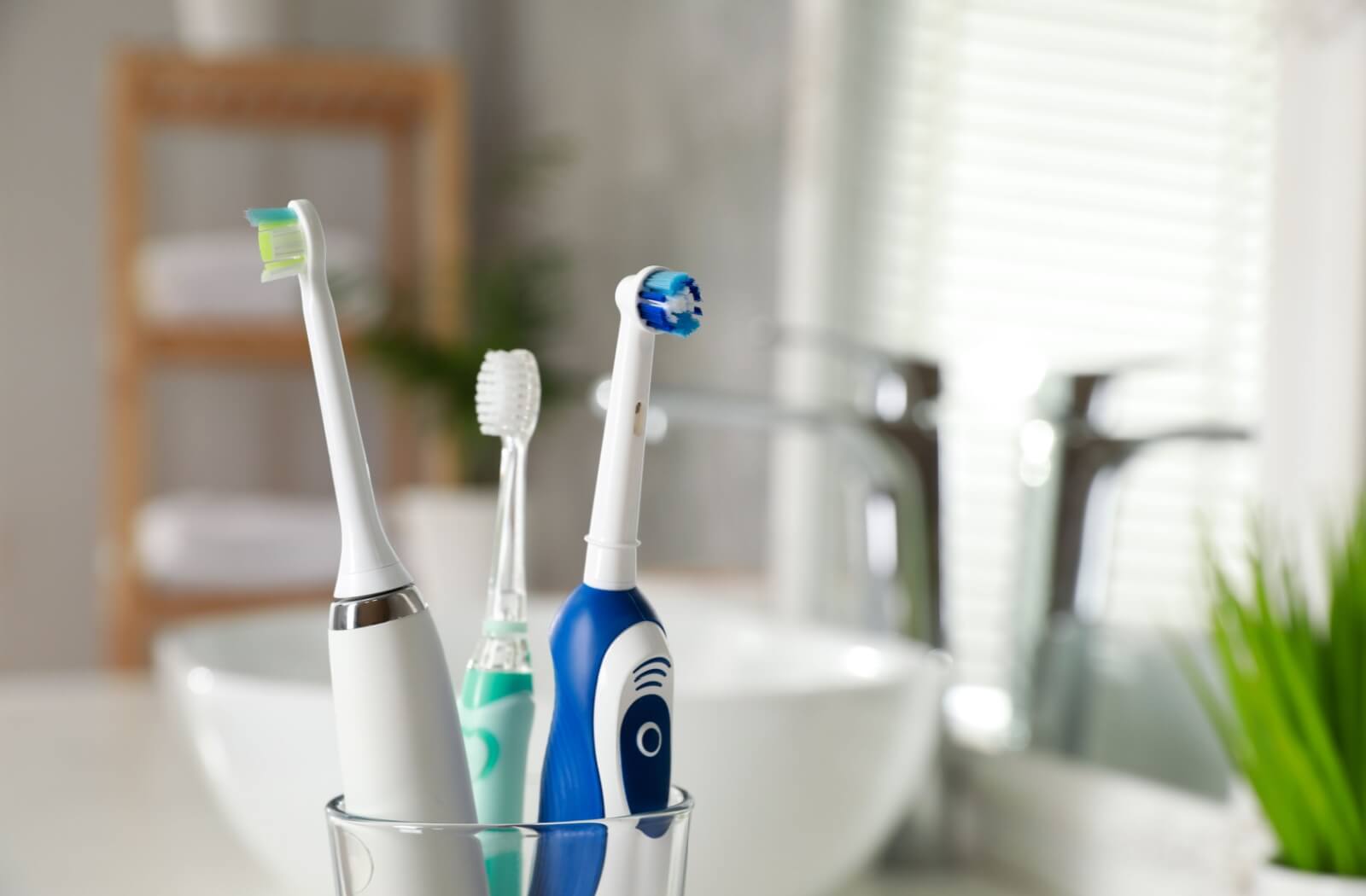How to Use an Electric Toothbrush

Electric toothbrushes have taken the dental world by storm, and for good reason. If you've been contemplating the switch from a traditional manual toothbrush to an electric one, you're not alone. Imagine taking the guesswork out of brushing and letting a piece of nifty technology do all the hard work for you. Whether you're new to electric toothbrushes or just curious about how they can elevate your oral hygiene game, our team has got you covered.
Why Choose an Electric Toothbrush?
Electric toothbrushes offer many benefits for your dental care routine. With advanced technology and powerful bristle movements, they remove plaque and stains more effectively, leading to a brighter smile. If manual brushing feels tedious, especially after a long day, electric toothbrushes simplify the task.
They are also easy to use, making them ideal for those with limited mobility or conditions like arthritis. Electric toothbrushes can even make brushing fun for children, turning it into a playful activity with music or fun sounds.
The Benefits of Electric Toothbrushes
It's no secret that brushing your teeth is vital for maintaining oral health. Electric toothbrushes can take your routine to the next level with their numerous benefits.
First and foremost, electric toothbrushes excel in efficiency. Thanks to their rapid bristle movements, they can sweep away plaque more effectively than manual brushes. This can reduce the risk of cavities and gum disease, keeping your teeth and gums healthier in the long run. With consistent use, you'll likely notice your teeth feeling cleaner and smoother.
Many electric toothbrushes feature built-in timers, ensuring you brush for the full two minutes recommended by dentists. This helps to ensure each tooth gets the attention it deserves. With these time-saving features, you can trust that you're maintaining excellent oral hygiene with every use.
How to Properly Use Your Electric Toothbrush
Using an electric toothbrush is straightforward, but knowing the right technique can maximize its effectiveness. Here's how:
Start by applying a pea-sized amount of toothpaste onto the bristles. Resist the urge to turn on the brush to avoid splattering toothpaste. Instead, place it in your mouth first, then switch it on. This prevents mess and ensures even toothpaste application.
Hold the toothbrush at a 45-degree angle against your teeth and gums. This position maximizes contact and ensures the bristles reach all the nooks and crannies. Gently glide the toothbrush over each tooth, allowing the brush to do the work. Avoid pressing too hard; the bristles should move easily over your teeth, removing plaque without causing discomfort.
Make sure to brush every part of your teeth, including the fronts, backs, and chewing surfaces. Spend a few seconds on each tooth, letting the brush do its job. Remember, there's no need for vigorous scrubbing; the electric toothbrush's mechanics handle the cleaning for you.
Do You Have to Brush Back & Forth with an Electric Toothbrush?
One common question is whether you need to use a back-and-forth motion with an electric toothbrush. The answer is no.
With an electric toothbrush, simply guide the brush along each tooth's surface and allow the vibrating or rotating bristles to do their job. The brush's movements are designed to break up plaque and clean effectively without the need for additional effort on your part. You may discover that it can be a relief to know your teeth are getting the attention they need with minimal exertion. If you prefer a slight back-and-forth motion, that's fine too—just be gentle to avoid applying too much pressure.
How to Use an Electric Toothbrush with Braces

For those with braces, electric toothbrushes can be a game-changer when it comes to maintaining oral hygiene. Here's how to use them effectively:
Start with a brush head designed for braces, if available, as these have bristles that reach around brackets and wires. With the toothbrush off, place it in your mouth and angle it 45 degrees against your teeth and braces. Turn on the brush and guide it over each tooth, focusing on areas around brackets and wires. Take your time cleaning both upper and lower teeth thoroughly.
If you're concerned about damaging your braces, don't hesitate to consult your dentist. They can provide personalized recommendations and suggest suitable brush heads or techniques to ensure your oral hygiene routine is as effective as possible.
Are There Any Downsides to Using an Electric Toothbrush?
Electric toothbrushes are great, but they have some downsides:
One is cost. They are generally pricier than manual ones, and you'll need to replace the brush heads periodically. Over time, these expenses can add up, but many find the benefits worth it.
Another issue is the need for power. You'll have to recharge them or keep spare batteries on hand. This can be inconvenient, but it's essential to ensure your toothbrush is always ready.
Lastly, electric toothbrushes are less portable due to their size and charging needs. If you travel often, you'll need to pack the charger and brush heads, taking up extra luggage space. Despite these drawbacks, many users find the superior cleaning performance worth it.
Should I Get an Electric Toothbrush?
Electric toothbrushes are a valuable tool for maintaining oral health, but they can't replace regular dental visits. Your teeth play an essential role in your overall well-being, and regular checkups help keep them healthy and strong.
If you're considering an electric toothbrush, we encourage you to give it a try. It could transform your brushing routine and contribute to better oral hygiene. To ensure your teeth stay in top condition, we invite you to schedule an appointment with Wing Dental. Our team is here to support you in your quest for a healthy smile, and we're ready to provide expert guidance and care tailored to your needs.